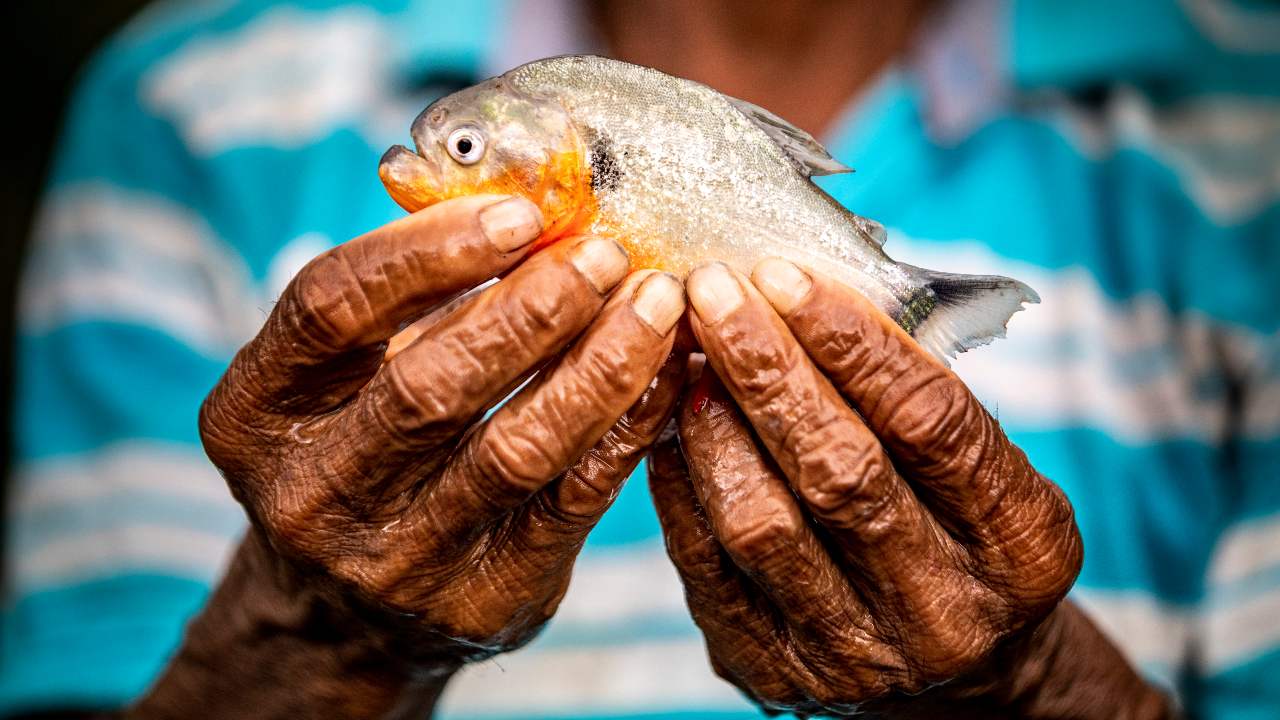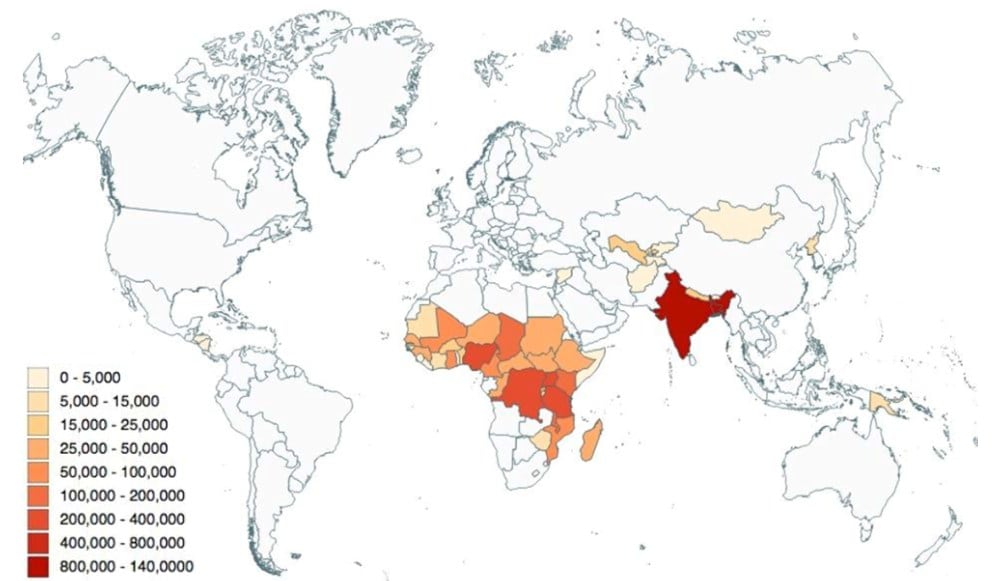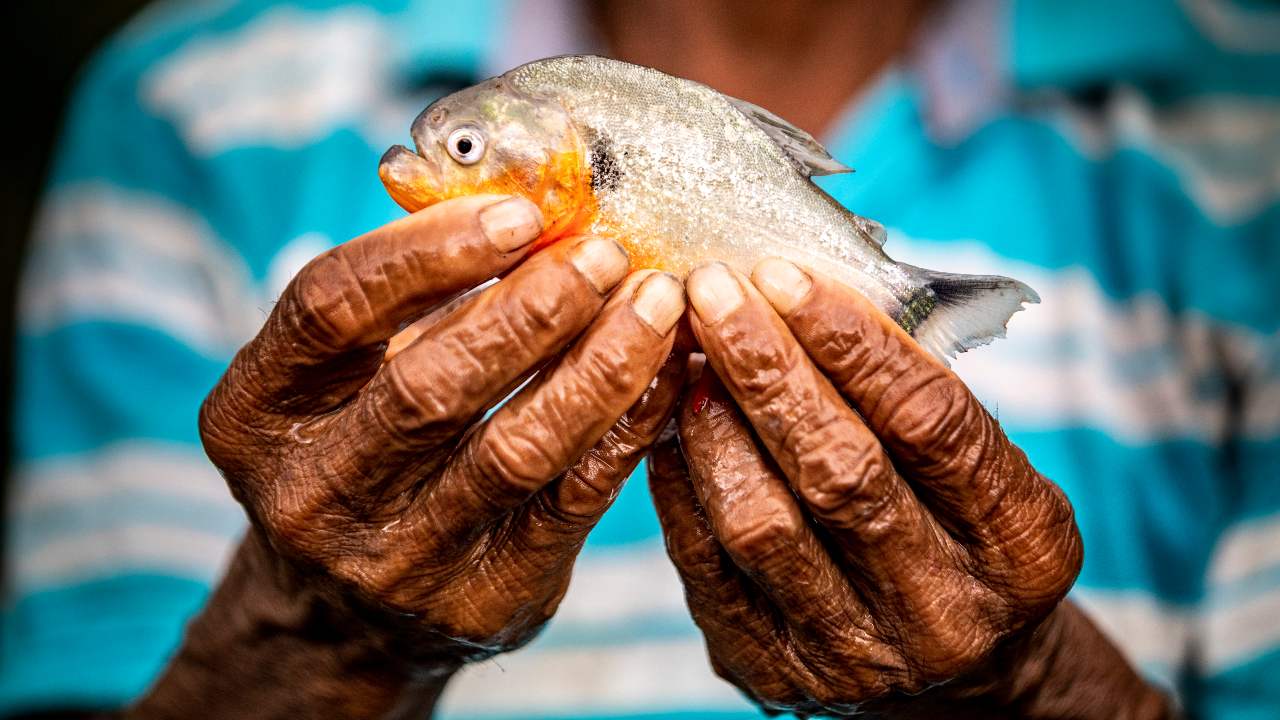tech2 News StaffMar 05, 2021 09:12:28 IST
Did you know: There are more freshwater species than saltwater species.
The world’s freshwater fish population is rapidly declining due to various reasons, including but not limited to climate change, overfishing, habitat destruction, etc. A new report lists all the ways freshwater biodiversity is facing extinction and also comprises a list of solutions that can help bring it back from the brink. The report, titled World’s Forgotten Fishes, has been published after a combined effort from 16 global conservation organisations including the World Wildlife Fund (WWF). The WWF believes that while deforestation, wetland degradation, ocean pollution, etc have become mainstream concerns, freshwater biodiversity has not made a blip on the global radar.

A fisher holding a piranha. Image credit: Camilo Díaz/WWF Colombia (1)
Freshwater diversity includes fish and other life forms that live in rivers, lakes and wetlands. According to a press release, freshwater biodiversity is declining at twice the rate of marine life. One in three freshwater fish species is already threatened with extinction. In 2020 itself, 16 species were declared extinct by the IUCN Red List of Threatened Species. These are disturbing statistics, as 51 percent of all known species of fish live in freshwater.
The main cause for the destruction of its ecosystem are:
- Habitat destruction
- Hydropower dams on free-flowing rivers
- Over-abstraction of water for irrigation
- Domestic, agricultural and industrial pollution
- Overfishing
- Destructive fishing practices
- Introduction of invasive non-native species
- Climate change
- Unsustainable sand mining
- Wildlife crime
Freshwater fish is an important source of food and income for many people and also supports two major industries – recreational fishing and pet fish.
Also known as sport fishing, this industry generates over US$100 billion annually, while the aquarium fish industry is worth up to US$30 billion.
Freshwater fish is key in local ecosystems and can provide food for 200 million people in Asia, Africa and South America. It is also a source of income for 60 million people around the world. According to a report by Down to Earth, around 2.5 and six percent of the global agricultural workforce work in freshwater fisheries.

40 percent of inland fish capture comes from Low Income Food Deficient Countries. Image credit: FAO Review of the State of the World Fishery Resources, 2018
“Securing a New Deal for the world’s freshwater ecosystems will bring life back to our dying rivers, lakes and wetlands. It will bring freshwater fish species back from the brink, too – securing food and jobs for hundreds of millions, safeguarding cultural icons, boosting biodiversity and enhancing the health of the freshwater ecosystems that underpin our well-being and prosperity,” said Stuart Orr, WWF global Freshwater Lead.
Developed by scientists and freshwater experts, there are solutions that can “help the world’s freshwater ecosystems and reverse decades of decline in freshwater fish populations.” They recommend implementing the Emergency Recovery Plan for freshwater biodiversity that states the following:
- Let rivers flow more naturally
- Improve water quality in freshwater ecosystems
- Protect and restore critical habitats
- End overfishing and unsustainable sand mining in rivers and lakes
- Prevent and control invasions by non-native species
- Protect free-flowing rivers and remove obsolete dams
Highlights of the report
- 80 species of freshwater fish have already been declared ‘Extinct’ by the IUCN Red List of Threatened Species
- Populations of migratory freshwater fish have fallen by 76 per cent since 1970
- Populations of mega-fish have fallen by a catastrophic 94 percent
- in 2018, just 16 countries produced 80 per cent of the world’s reported wild freshwater catch with Asia accounting for 2/3rd of the global catch with China, India, Bangladesh, Myanmar, Cambodia and Indonesia reporting the largest hauls.
- Food and Agriculture Organization found that 50 percent of the global freshwater fish catch can be attributed to just seven river basins – the Mekong, Nile, Irrawaddy, Yangtze, Brahmaputra, Amazon and Ganges.
- Approximately one percent of the Earth’s surface area is fresh water and 71 percent is marine, yet over half of the known fish species are found in freshwater.
- 90 percent of the global freshwater fish catch comes from river basins with above-average stress levels.
- At least 12 percent (11.5 million tonnes) of all the fish caught in the world are wild freshwater fish.
- 40 percent of freshwater fisheries comes from ‘low-income food deficient countries’.










